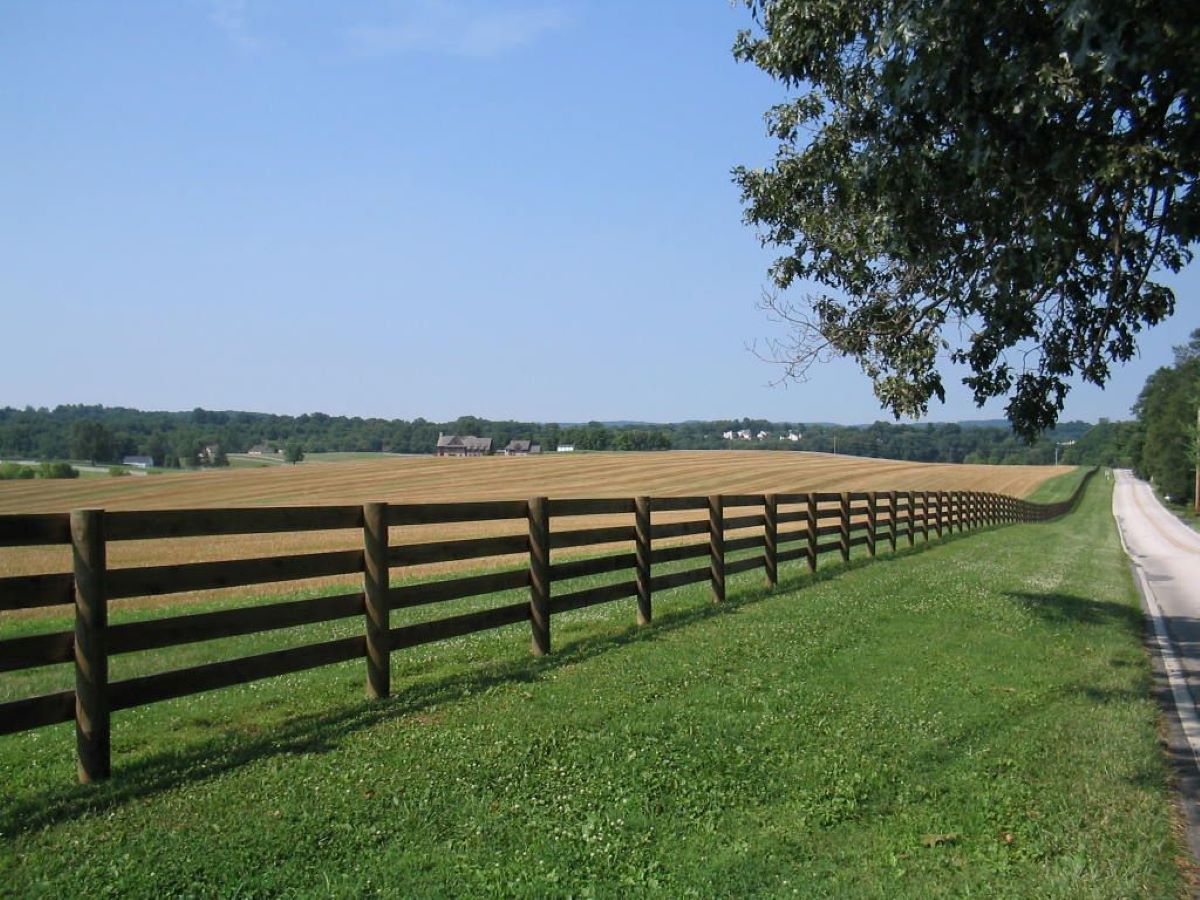

Articles
What Is A Fence
Modified: August 27, 2024
Discover everything you need to know about fences with our informative articles. Gain insights on installation, maintenance, and types of fences.
(Many of the links in this article redirect to a specific reviewed product. Your purchase of these products through affiliate links helps to generate commission for Storables.com, at no extra cost. Learn more)
Introduction
A fence is an essential element of any property, providing security, privacy, and boundary definition. It serves as a physical barrier, preventing unauthorized access, keeping pets and children safe, and creating a sense of seclusion. Fences have been used for centuries, evolving from simple wooden structures to a wide range of modern designs and materials.
Whether you have a residential, commercial, or agricultural property, choosing the right fence is crucial. It not only enhances the aesthetic appeal of your space but also serves practical purposes, such as noise reduction and wind protection. With the variety of fence types, materials, and customization options available, it’s important to understand your specific needs and preferences before making a decision.
In this article, we will explore the different types of fences, materials used in their construction, functions and uses, factors to consider when choosing a fence, installation and maintenance guidelines, as well as regulations and permits associated with fencing. By the end, you will have a comprehensive understanding of fences and be equipped with the knowledge to make an informed choice for your property.
Key Takeaways:
- Understanding the diverse functions and uses of fences, from security and privacy to noise reduction and aesthetic appeal, can help property owners make informed decisions when selecting the right type of fence for their specific needs.
- Prioritizing compliance with local regulations, obtaining necessary permits, and addressing common fence issues promptly through proper troubleshooting and maintenance are crucial for ensuring the longevity and functionality of fences on any property.
Read more: What Is A Vinyl Fence
Definition of a Fence
Simply put, a fence is a structure built to enclose an area or serve as a boundary marker. It is typically made up of vertical posts connected by horizontal rails or panels. Fences come in various shapes, sizes, and designs, and can be constructed using different materials, including wood, vinyl, metal, and composite materials.
The primary purpose of a fence is to provide security and privacy. It can prevent trespassers and unwanted animals from entering your property, keeping your loved ones and belongings safe. A sturdy fence can act as a visual deterrent, deterring potential intruders from even attempting to approach your property.
In addition to security, fences can also serve aesthetic purposes. They can enhance the overall look and feel of your property, adding curb appeal and value. With a vast array of fence styles available, you can choose one that complements your property’s architecture and landscaping.
Moreover, fences offer practical functions depending on their type and design. For instance, privacy fences are specifically built to obstruct the view from outside, providing seclusion in backyard areas. These fences are commonly used in residential settings to create a peaceful and intimate atmosphere.
Boundary fences, on the other hand, are used to mark property lines and establish boundaries between adjacent properties. They are essential in avoiding disputes with neighbors and ensuring that everyone respects each other’s property.
Other types of fences serve specific purposes like pool fences, designed to prevent accidental drowning and ensure the safety of children and pets. Agricultural fences are used to enclose livestock and protect them from predators. Noise-reducing fences can minimize sound transmission and create a more peaceful environment.
Overall, a fence is much more than just a barrier—it is an integral part of any property, offering security, privacy, and aesthetic appeal. Understanding the various types of fences and their purposes can help you choose the perfect fence for your specific needs.
Different Types of Fences
When it comes to choosing a fence, there is a wide range of options available, each with its own unique characteristics and purposes. Here are some of the most common types of fences:
- Wooden Fences: Wooden fences are classic and versatile, blending well with various architectural styles. They offer privacy and a natural aesthetic appeal. Common styles include picket fences, privacy fences, and post-and-rail fences.
- Vinyl Fences: Vinyl fences are known for their durability and low maintenance. They come in various styles and colors, offering the appearance of wood without the need for regular painting or staining. Vinyl fences are resistant to rot, fading, and warping, making them a popular choice for homeowners.
- Metal Fences: Metal fences, such as wrought iron and steel, are known for their strength and longevity. They provide security and can add a touch of elegance to your property. Metal fences can be customized with ornamental designs and are often used for both residential and commercial purposes.
- Chain Link Fences: Chain link fences are widely used due to their affordability and durability. They consist of interlocking wires woven into a diamond pattern. While they may not offer much privacy, these fences are excellent at creating a physical barrier for containing pets or marking property boundaries in commercial and industrial settings.
- Composite Fences: Composite fences are made from a combination of wood fibers and recycled plastic. They offer the natural look of wood while being resistant to rot, insects, and weathering. Composite fences require minimal maintenance and can be a sustainable choice for environmentally-conscious homeowners.
- Bamboo Fences: Bamboo fences provide a unique and natural aesthetic appeal. They are eco-friendly, durable, and resistant to pests and rot. Bamboo fences are commonly used for privacy purposes and can add an exotic touch to your outdoor space.
- Electric Fences: Electric fences are typically used for agricultural or livestock purposes. They use a mild electric shock to deter animals from crossing the fence line. This type of fence is excellent for keeping livestock contained and protecting crops from wildlife.
Keep in mind that each type of fence has its own set of pros and cons, so it’s important to consider factors such as your specific needs, budget, maintenance requirements, and property aesthetics when making a decision.
Materials Used for Fencing
When it comes to selecting a fence, the material used plays a crucial role in determining its appearance, durability, and maintenance requirements. Here are some commonly used materials for fencing:
- Wood: Wood is a popular choice for fencing due to its natural beauty and versatility. Common wood types used for fences include cedar, pine, redwood, and spruce. Wood fences can be customized with various styles, such as picket, privacy, or post-and-rail, and they can be painted or stained to match the desired aesthetic. However, wood fences require regular maintenance, including staining or painting every few years and repairing or replacing rotting or damaged boards.
- Vinyl: Vinyl is a synthetic material that is known for its durability and low maintenance. Vinyl fences are available in various styles to mimic the appearance of wood, such as picket, privacy, or decorative. Unlike wood, vinyl fences do not require painting or staining and are resistant to rotting, warping, and pests. They can be easily cleaned with soap and water. However, vinyl fences may fade over time, especially in areas with intense sunlight, and they can be relatively more expensive upfront compared to other materials.
- Metal: Metal fences, such as wrought iron, aluminum, or steel, offer strength and durability. Wrought iron fences are known for their ornamental designs and can add elegance to any property. Aluminum fences are lightweight, rust-resistant, and require minimal maintenance. Steel fences are sturdy and provide excellent security. Metal fences can be customized with decorative elements and are typically more expensive than other materials.
- Chain Link: Chain link fences are made of interwoven steel wires bent in a zigzag pattern. They are affordable and durable, making them a popular choice for both residential and commercial settings. Chain link fences can be galvanized for enhanced rust resistance and can also be vinyl-coated for a more appealing appearance. While they are not the most visually appealing option, chain link fences are effective at creating a physical barrier and allowing visibility.
- Composite: Composite fences are made from a blend of wood fibers and recycled plastic, combining the natural look of wood with the durability of plastic. They are resistant to rot, insects, and fading, making them a low-maintenance alternative to traditional wood fences. Composite fences come in different styles and colors, and they do not require painting or staining. However, they can be more expensive upfront compared to other materials.
- Bamboo: Bamboo fences provide a unique and eco-friendly option. They are made from natural bamboo poles, offering a tropical, exotic aesthetic. Bamboo fences are durable, resistant to pests, and can withstand various weather conditions. They require regular maintenance, such as sealing or staining, to prolong their lifespan.
Each material has its own advantages and considerations, so it’s important to evaluate factors such as budget, desired appearance, durability, maintenance, and the specific needs of your property when choosing the right fencing material.
Functions and Uses of Fences
Fences serve various functions and offer practical uses for both residential and commercial properties. Here are some of the common functions and uses of fences:
- Security: One of the primary functions of a fence is to provide security. A well-built and sturdy fence acts as a physical barrier, deterring trespassers and keeping unwanted individuals out of your property. It adds an extra layer of protection for your home, family, and valuables, providing peace of mind.
- Privacy: Privacy is another crucial purpose of a fence, especially in residential settings. Privacy fences are usually taller and solid, obstructing the view from outside and creating a secluded space for your backyard. They allow you to enjoy outdoor activities, relax, and entertain guests without worrying about prying eyes.
- Boundary Marker: Fences serve as boundary markers, clearly defining the limits of your property. This helps avoid disputes with neighbors and ensures that everyone respects each other’s space. Boundary fences can be particularly important in rural or suburban areas where properties are in close proximity.
- Noise Reduction: Certain types of fences, such as solid wood or composite fences, can act as noise barriers. They help reduce the impact of external noise from nearby streets, highways, or noisy neighbors, creating a more peaceful and enjoyable living environment.
- Containment: Fences are often used to contain pets or children within a specific area, ensuring their safety and preventing them from wandering off. This is particularly important for homeowners with pets or young children who need a secure space to play and explore.
- Aesthetic Appeal: Fences can enhance the overall look and curb appeal of your property. They come in various styles, colors, and materials, allowing you to choose a fence that complements your property’s architecture and landscaping. A well-designed fence can elevate the visual appeal of your outdoor space and create a welcoming atmosphere.
- Animal Control: Fences are commonly used in agricultural settings to enclose livestock and keep them from wandering off. They help protect animals from predators, prevent damage to crops, and maintain a controlled environment for farming or ranching activities.
Each property has its own unique needs and requirements, so it’s important to consider these functions and uses when selecting a fence. Understanding the purpose behind your fence will help you make an informed decision and choose the right type of fence that meets your specific needs.
Read more: What Is A Perimeter Fence
Factors to Consider When Choosing a Fence
Choosing the right fence for your property involves considering various factors to ensure that it meets your functional, aesthetic, and budgetary requirements. Here are some essential factors to consider when selecting a fence:
- Purpose: Determine the primary purpose of your fence. Are you looking for security, privacy, containment, or simply enhancing the appearance of your property? Understanding the purpose will help you narrow down the options and choose a fence that aligns with your specific needs.
- Budget: Set a budget for your fencing project. Fences come in a wide range of prices, depending on the materials used and the desired style. Consider the cost of materials, installation, and any additional features or customization you may require. Remember to account for long-term maintenance costs as well.
- Property Type and Location: Consider the type of property you have and its location. The architectural style, landscape, and local climate can influence your choice of fence. For example, in coastal areas, you may need materials that are resistant to saltwater corrosion, while in windy regions, you might require a sturdy fence that can withstand strong gusts.
- Maintenance: Evaluate the level of maintenance you are willing to invest in your fence. Some materials, like vinyl and composite, require minimal upkeep, while others, like wood, may need regular painting, staining, or repairs. Take into account your time, budget, and willingness to maintain the fence over the years.
- Local Regulations and Neighborhood Requirements: Familiarize yourself with any local regulations or homeowner association guidelines that may dictate the type, height, and placement of fences in your area. Ensure that your desired fence complies with these regulations to avoid any legal issues or disputes with neighbors.
- Security and Privacy: Assess the level of security and privacy you need. If security is a top priority, you may want to consider a fence that provides additional features like anti-climbing measures or electronic access gates. For privacy, choose a fence with minimal gaps between boards or panels.
- Climate Considerations: Take into account the climate in your area. Different materials may react differently to extreme temperatures, moisture, or pests. For example, in regions with high humidity or termite activity, vinyl or metal fences might be better choices than wood.
- Style and Aesthetics: Consider the style and aesthetics of your property. Look for a fence that complements the architecture and landscaping, enhancing the overall curb appeal. Whether you prefer a traditional, modern, or rustic look, there are various designs and finishes available to suit your taste.
- Longevity: Evaluate the expected lifespan of different fence materials. Some materials, like vinyl and metal, are known for their durability and longevity, while others, like wood, require more maintenance to ensure their longevity. Investing in a fence with a longer lifespan can save you on replacement costs in the future.
By taking these factors into account, you can make an informed decision and choose a fence that meets your specific needs, budget, and preferences. It’s always a good idea to consult with fencing professionals or contractors who can provide guidance and help you select the most suitable option for your property.
Installation and Maintenance of Fences
Proper installation and regular maintenance are key to ensuring the longevity and functionality of your fence. Here are some guidelines for installation and maintenance:
Installation:
- Planning and Preparation: Before installing a fence, carefully plan the layout and determine the exact location of your property boundaries. Obtain any necessary permits and ensure you comply with local regulations. Mark the fence line using stakes and string, making sure it is straight and level.
- Clearing and Digging: Clear the area along the fence line from any obstacles such as vegetation, rocks, or debris. Dig post holes using a post hole digger or auger. The depth and width of the holes will depend on the type of fence and the local climate conditions. Install posts and secure them with concrete or gravel, ensuring they are aligned and sturdy.
- Panel or Board Installation: If your fence consists of panels or boards, attach them to the posts using appropriate fasteners. Ensure that the panels are level and evenly spaced. If necessary, make cuts to adjust the size of panels to fit properly.
- Gate Installation: Install gates according to the manufacturer’s instructions. Ensure that they swing smoothly and securely close. Consider adding latches, locks, or other security features as needed.
- Finishing Touches: Once the fence is installed, inspect it thoroughly to ensure everything is secure and aligned correctly. Make any necessary adjustments or repairs. Consider applying a protective sealant, stain, or paint to enhance the fence’s durability and appearance.
Maintenance:
- Cleaning: Regularly clean your fence to remove dirt, debris, and stains. Use a mild detergent and a soft brush or cloth. Rinse with water to remove any residue. Avoid using harsh chemicals or abrasive materials that can damage the surface of your fence.
- Inspecting for Damage: Routinely inspect your fence for signs of damage, such as cracked boards, loose fasteners, or leaning posts. Repair or replace any damaged components to maintain the integrity of the fence.
- Wooden Fence Maintenance: If you have a wooden fence, regularly check for signs of rot or insect infestation. Treat the wood with preservatives or sealants to protect it from humidity, rain, and UV rays. Depending on the type of wood, you may need to periodically paint or stain the fence to maintain its appearance and longevity.
- Vinyl, Metal, and Composite Fence Maintenance: These types of fences generally require less maintenance compared to wood. Clean them regularly to prevent dirt buildup and maintain their appearance. Check for any loose or damaged components and repair as needed.
- Landscaping and Vegetation: Regularly trim any vegetation that is growing near or against the fence. Overgrown plants can put pressure on the fence, potentially causing damage or weakening its stability.
- Snow and Ice: If you live in a snowy or icy climate, take precautions to prevent snow or ice accumulation on your fence. Heavy snow or ice can cause strain on the fence, leading to damage. Clear snow or ice gently using appropriate tools.
Following these installation and maintenance guidelines will help ensure the longevity, functionality, and appearance of your fence. If you are unsure about any aspect of installation or maintenance, it’s recommended to consult a professional for assistance to ensure the best results.
Read more: What Is A Composite Fence
Regulations and Permits for Fencing
Before installing a fence, it’s important to understand the regulations and permits that may apply to your area. Local municipalities, homeowner associations, and zoning regulations may have specific requirements and restrictions regarding fence installation. Here are some important considerations:
Local Regulations:
Local regulations dictate the specifications and limitations for fences in your area. These regulations may include rules regarding fence height, setback distance from property lines, materials used, and aesthetic requirements. Some areas may also have restrictions on the type of fencing allowed, particularly in historic districts or conservation areas. It’s crucial to research and familiarize yourself with the local regulations before installing your fence to ensure compliance.
Homeowner Associations (HOAs):
If you live in a neighborhood governed by a homeowner association, you may need to adhere to additional guidelines and restrictions. HOAs often have their own set of rules and architectural guidelines that dictate the appearance and materials allowed for fences. It’s important to review the HOA’s bylaws and consult with the appropriate representatives to ensure that your fence plans comply with their requirements.
Permits:
In many cases, you will need to obtain a permit before installing a fence. The requirements for permits vary depending on your location and the height and type of fence you plan to install. Some areas may have exemptions for fences below a certain height, while others may require permits regardless of fence height. Contact your local building department or permit office to determine if you need a permit and the specific requirements for obtaining one.
When applying for a permit, you may need to provide details such as the fence’s height, materials, design plans, and property survey indicating the proposed fence location. It’s essential to accurately complete the permit application and provide all necessary documentation to ensure a smooth approval process.
Read more: What Is Lattice Fence
Boundary Disputes:
When installing a fence along shared property lines, it’s crucial to communicate and coordinate with your neighbors. Accurate property surveys will help determine the precise location of the boundary. It’s recommended to have an open and respectful conversation with your neighbors to ensure that everyone is aware of the fence plans and agrees on the location.
In the event of a boundary dispute or disagreement, it may be necessary to consult legal professionals or seek mediation to resolve the issue. It’s important to address any concerns before proceeding with the fence installation to avoid potential conflicts in the future.
Remember, adhering to regulations and obtaining the required permits is essential to ensure that your fence installation is legal and in compliance with local guidelines. Failure to do so may result in fines, costly modifications, or even having to remove the fence altogether. Prioritizing compliance with regulations will help ensure a smooth and hassle-free fence installation process.
Common Issues and Troubleshooting with Fences
Like any other structure, fences can encounter problems over time. Understanding common issues that can arise with fences and how to troubleshoot them can help you maintain the integrity and functionality of your fence. Here are some common issues and some possible solutions:
1. Fence Damage:
Damage to fences can be caused by various factors such as severe weather conditions, accidents, or natural wear and tear. Common forms of damage include broken or leaning posts, cracked or rotted boards, or loose fasteners. Regular inspections can help you identify and address these issues promptly. Repair or replace damaged components to restore the fence’s stability and appearance.
2. Sagging or Uneven Panels:
Over time, fence panels may sag or become uneven due to shifting soil, exposure to weather conditions, or improper installation. If you notice sagging or uneven panels, reinforce the posts with additional support, such as braces or concrete footings. Adjust and realign the panels to ensure a level and consistent appearance.
Read more: What Is Stockade Fence
3. Leaning or Unstable Posts:
Leaning or unstable posts can compromise the stability of the entire fence. This issue may be caused by weak or damaged posts, improper installation, or soil shifting. If you notice leaning posts, reinforce them with additional support, such as metal braces or concrete footings. Ensure that the posts are securely anchored in the ground, and consider consulting a professional for assistance if needed.
4. Rot or Decay:
Wooden fences are susceptible to rot and decay, especially when exposed to moisture. Regularly inspect your wooden fence for signs of rot, such as soft or discolored wood. Replace any rotting boards or posts promptly to prevent further decay and maintain the fence’s structural integrity. Applying a protective sealant or stain can help prevent moisture penetration and prolong the life of the wood.
5. Pest Infestation:
Insects and pests can damage fences, especially wooden ones. Termites, carpenter ants, and other wood-boring insects can weaken the structure over time. If you suspect a pest infestation, take appropriate measures to eliminate the pests and prevent further damage. Consult with a pest control professional to identify the type of infestation and determine the most effective treatment method.
6. Fading or Discoloration:
Fences exposed to sunlight and weather conditions can fade or become discolored over time. Vinyl and composite fences are generally more resistant to fading than wood fences. To address fading or discoloration, consider applying a UV-protective sealant or using specialized cleaners designed for your specific fence material. This can help restore the fence’s original color and protect it from further damage.
Read more: What Is A Fence Picket
7. Maintenance Neglect:
Failure to perform regular maintenance tasks can result in various issues with your fence. This includes neglecting cleaning, sealing, or painting as required. Follow the manufacturer’s maintenance recommendations for your specific fence material. Regularly clean your fence, inspect for damage, and address any issues promptly to prevent them from escalating.
It’s important to note that if you’re uncertain about the appropriate solutions for any fence-related issue, it’s best to consult with a fencing professional who can provide expert advice and assistance. Proper maintenance and timely troubleshooting can help prolong the life of your fence and ensure that it continues to serve its intended purpose effectively.
Conclusion
Fences are an integral part of any property, serving multiple functions such as security, privacy, and property delineation. Understanding the different types of fences, materials used, and their respective functions can help you make an informed decision when selecting a fence for your specific needs.
When choosing a fence, consider factors such as your budget, desired level of security and privacy, property type, local regulations, and maintenance requirements. These factors will help you determine the most suitable fence material, style, and design.
Proper installation and regular maintenance are essential for the longevity and functionality of your fence. Follow the recommended installation guidelines, obtain any necessary permits, and ensure compliance with local regulations. Regularly inspect your fence for damage, address any issues promptly, and perform routine maintenance tasks to keep it in optimal condition.
Be mindful of the regulations and permits that may apply to your area, including local regulations and homeowner association guidelines. Understanding and complying with these requirements will help you avoid legal issues and potential conflicts with neighbors.
Lastly, if you encounter common issues with your fence, such as damage, sagging, rot, or pest infestation, take appropriate measures to troubleshoot and address them promptly. Consult with professionals if needed to ensure proper repairs and maintenance of your fence.
In conclusion, fences offer security, privacy, and aesthetic value to your property. By considering all the relevant factors, conducting proper installation, and staying on top of maintenance, you can enjoy the benefits of a durable and functional fence for years to come.
Frequently Asked Questions about What Is A Fence
Was this page helpful?
At Storables.com, we guarantee accurate and reliable information. Our content, validated by Expert Board Contributors, is crafted following stringent Editorial Policies. We're committed to providing you with well-researched, expert-backed insights for all your informational needs.
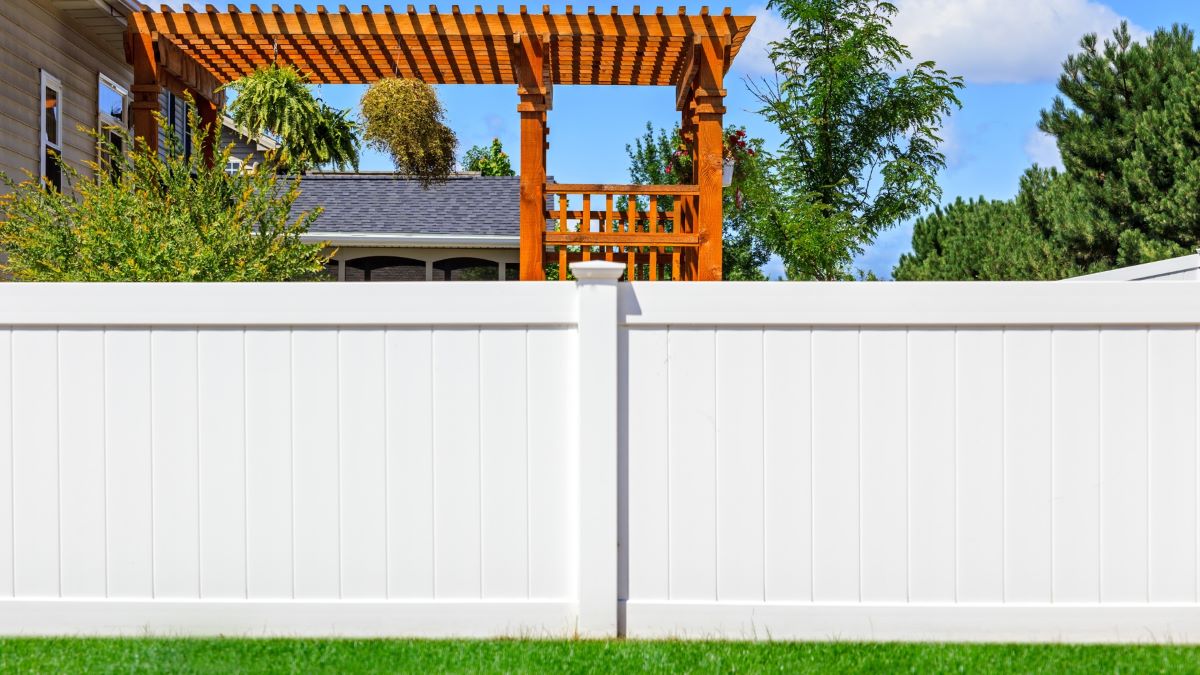
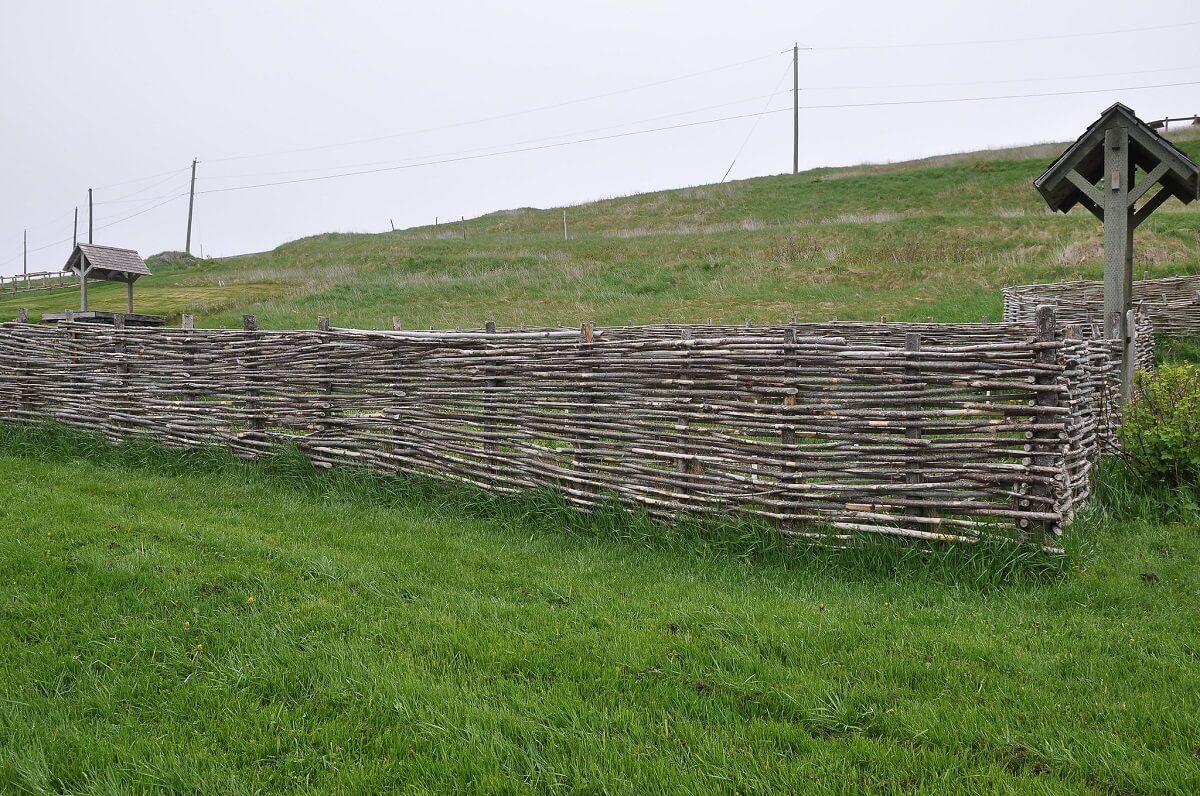
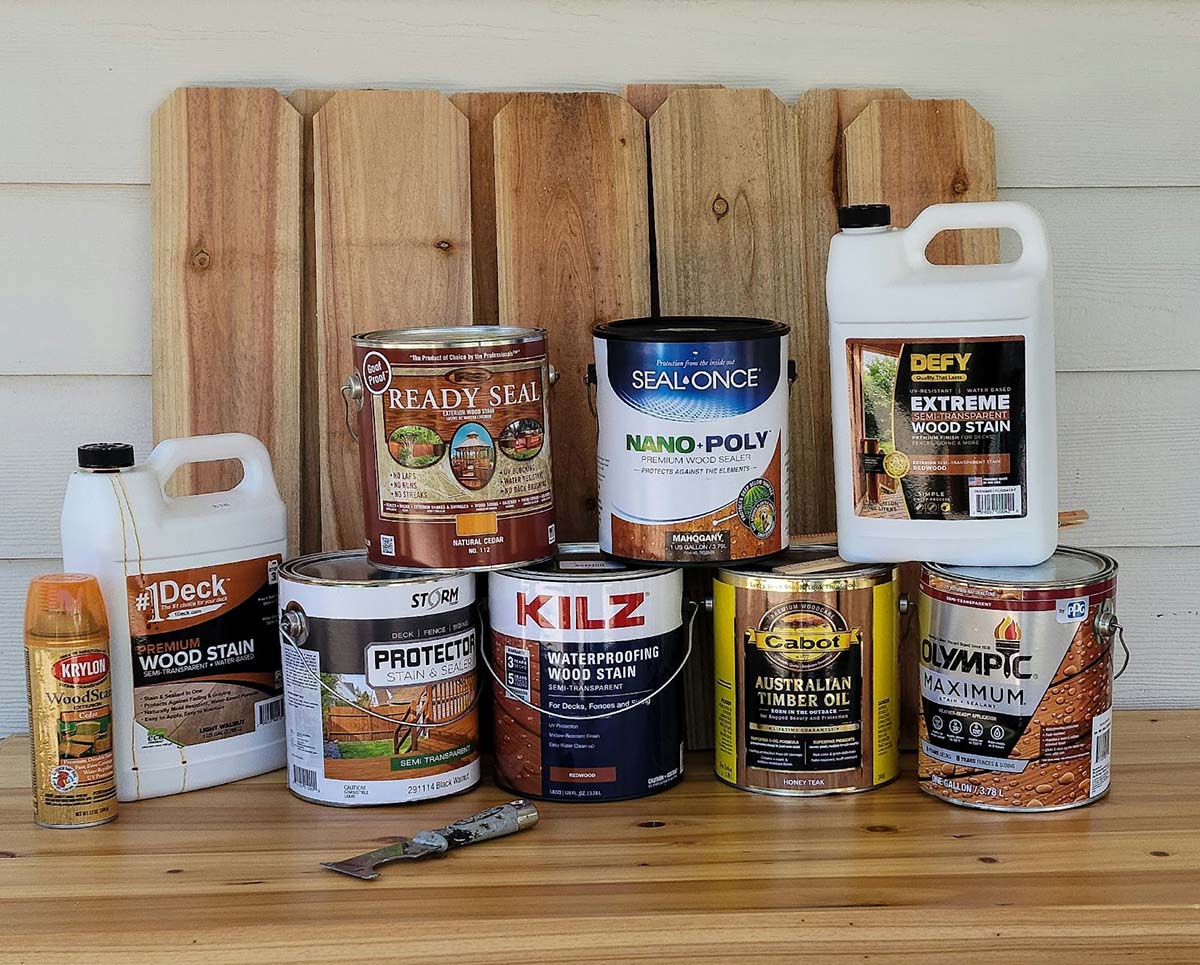
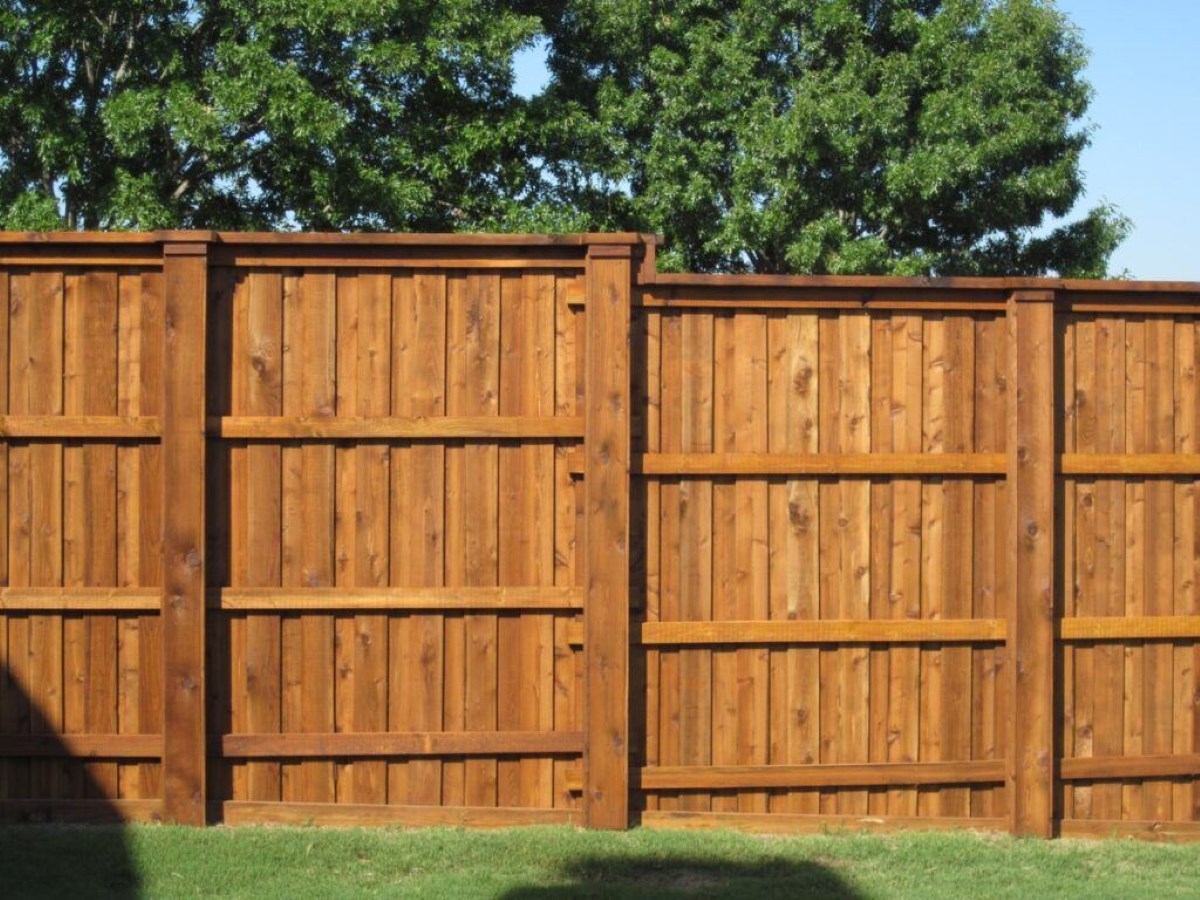
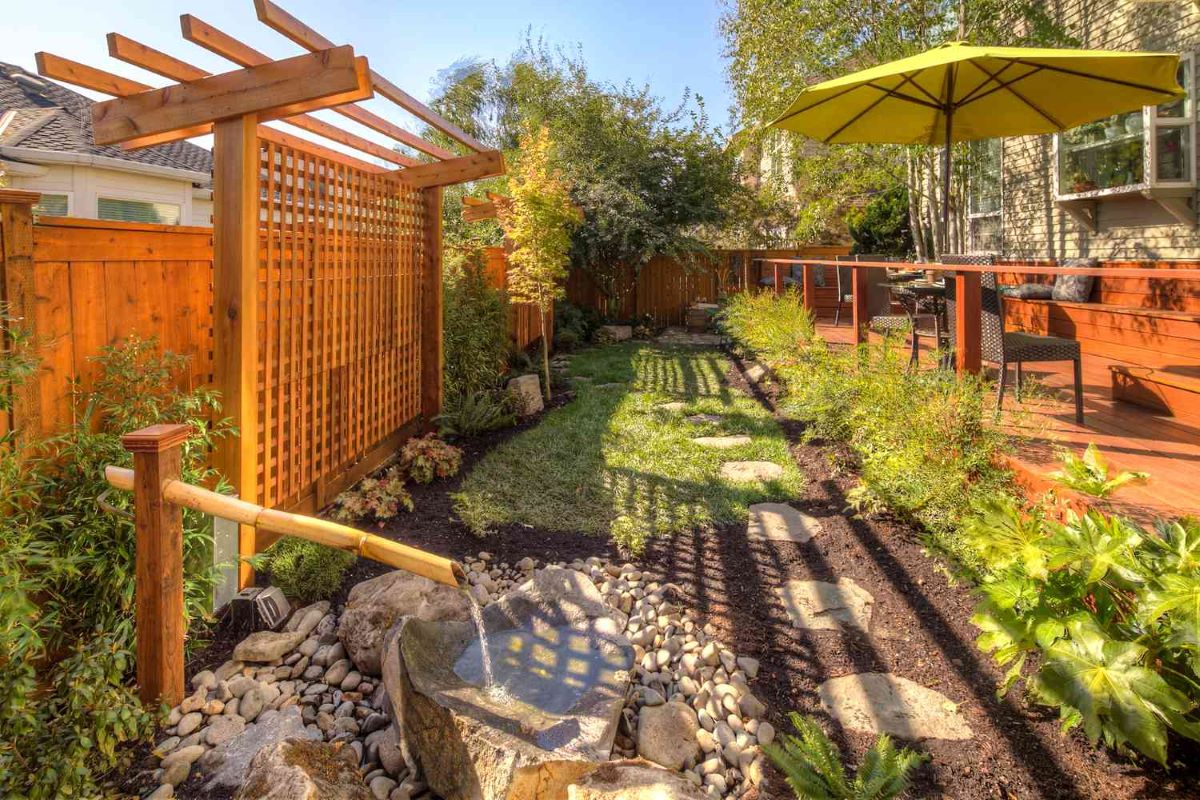

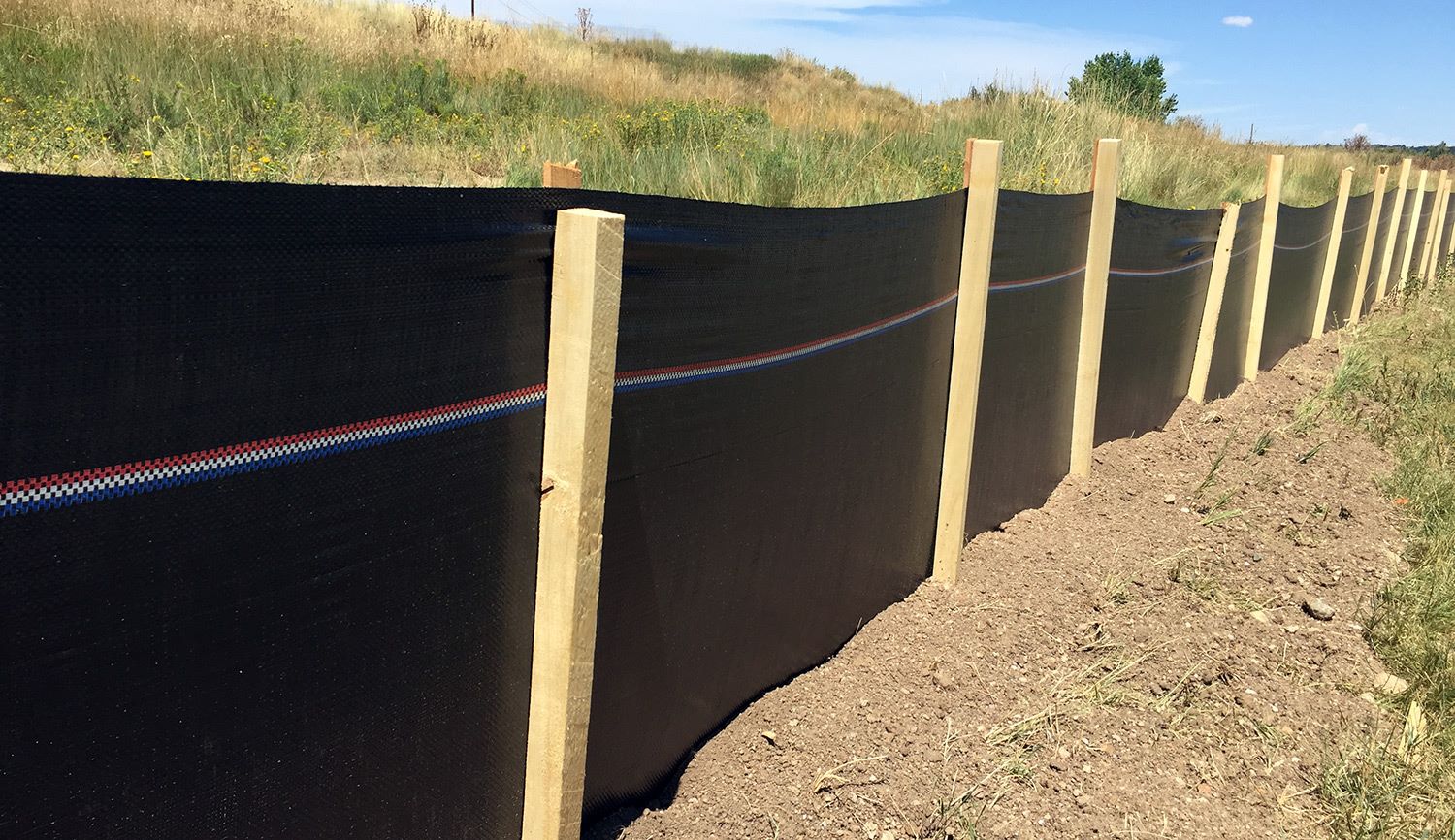


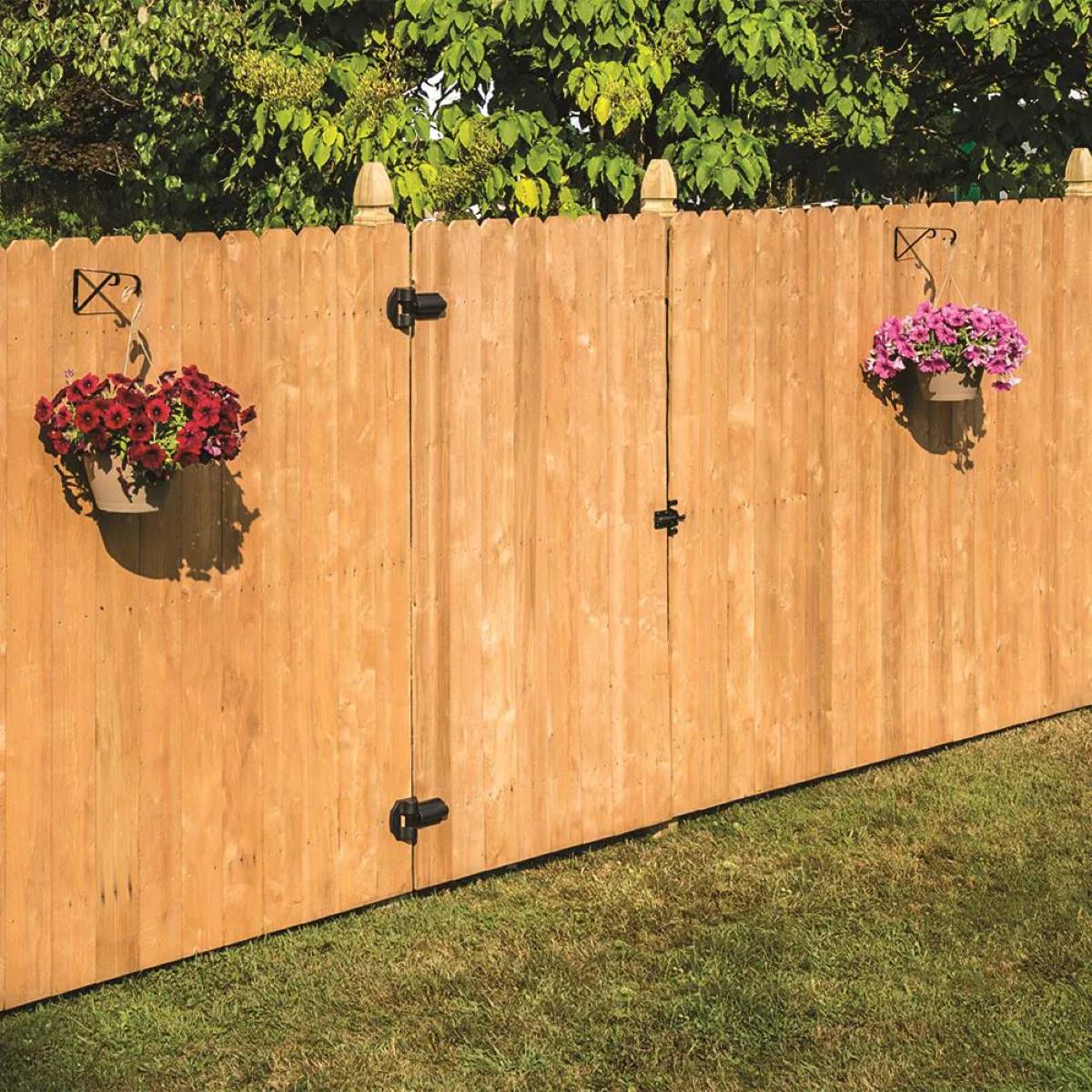

0 thoughts on “What Is A Fence”